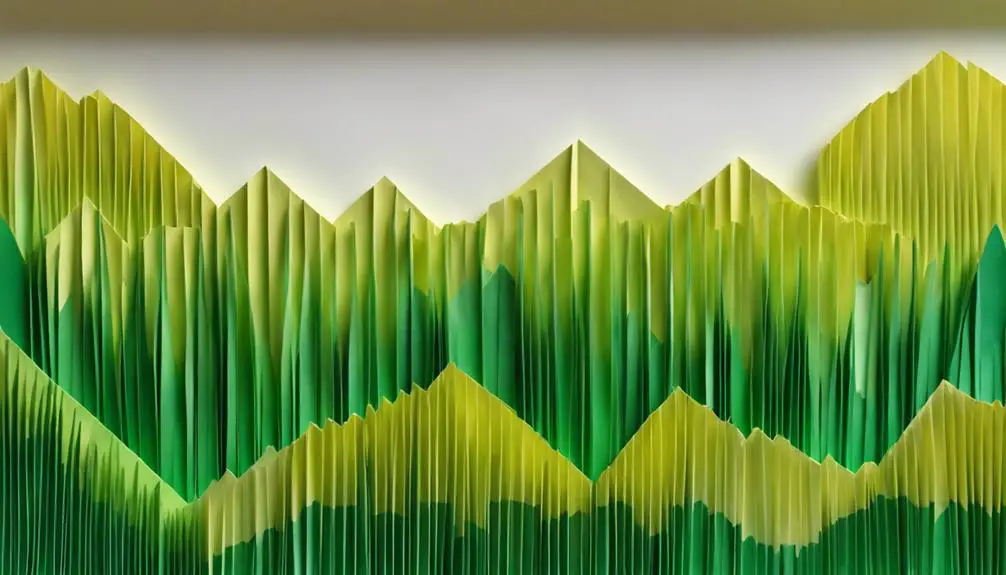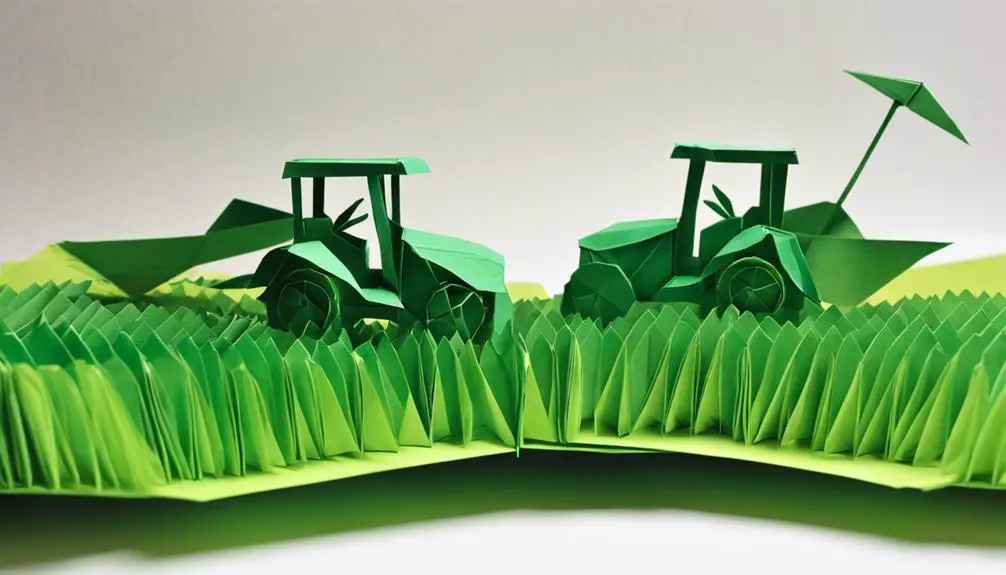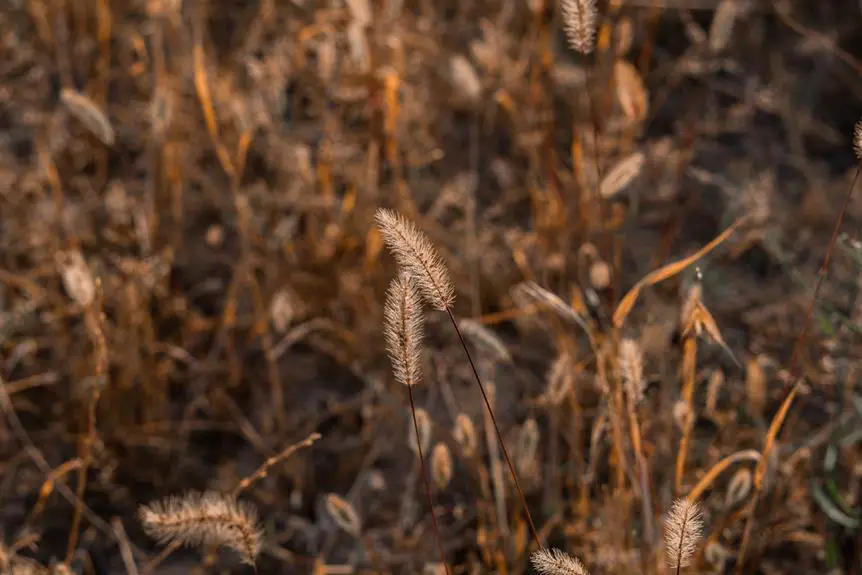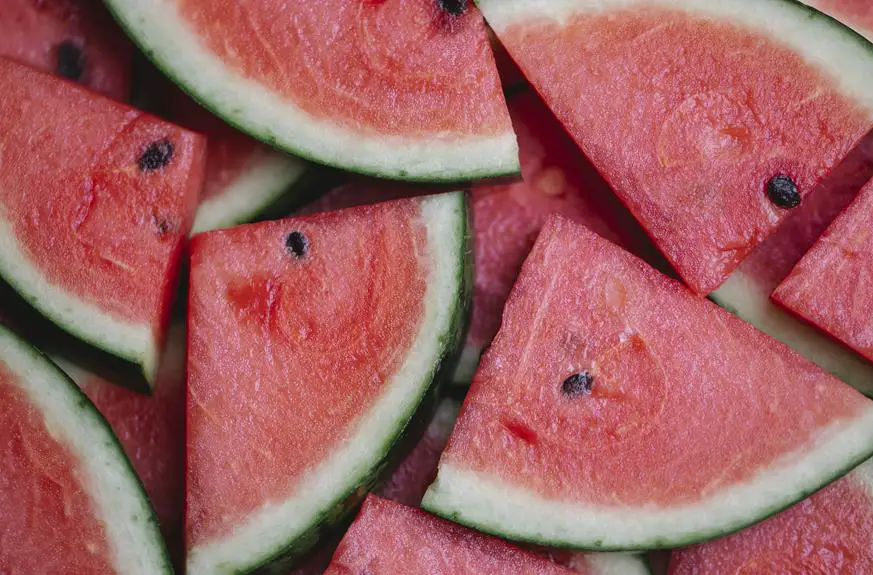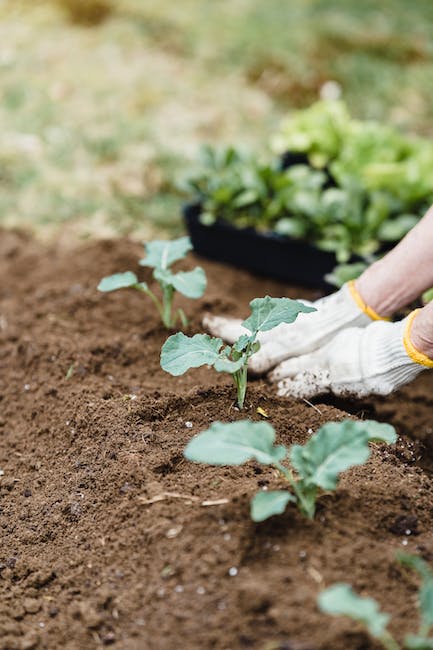-
Table of Contents
- Introduction
- The Pros and Cons of Cutting Grass During a Drought
- Alternatives to Traditional Lawn Care During Dry Spells
- How to Keep Your Lawn Healthy Without Watering or Mowing
- The Environmental Impact of Over-Mowing in Drought Conditions
- Expert Advice on Maintaining Your Yard’s Appearance While Conserving Water
- Q&A
- Conclusion
Introduction
During a drought, many homeowners may wonder if it is necessary or even safe to continue cutting their grass. While maintaining the appearance of your lawn is important, there are several factors to consider before deciding whether or not to cut your grass during a drought.
The Pros and Cons of Cutting Grass During a Drought
As the summer months approach, many homeowners are faced with the dilemma of whether or not to cut their grass during a drought. While it may seem like a simple decision, there are both pros and cons to consider before firing up your lawnmower.
One of the main arguments for cutting your grass during a drought is that it can help prevent wildfires. Dry grass and vegetation can easily catch fire from sparks caused by machinery or cigarettes, so keeping your lawn short and well-maintained can reduce this risk. Additionally, shorter grass allows more sunlight to reach the soil which helps promote healthy growth when rain finally does arrive.
On the other hand, cutting your grass too short during a drought can actually do more harm than good. When blades of grass are trimmed too low they lose moisture faster due to increased exposure to sunlight and wind. This makes them more susceptible to damage from heat stress which could lead to brown patches in your lawn.
Another downside of mowing during a drought is that it puts additional strain on an already stressed ecosystem. Grasses have evolved over millions of years to survive periods without water by going dormant until conditions improve again. By constantly removing new growth through mowing you’re preventing these natural survival mechanisms from taking place which could ultimately weaken your lawn’s ability to recover once rainfall returns.
So what should you do if you find yourself facing dry conditions? The answer depends largely on how severe the situation is in your area as well as personal preference regarding aesthetics versus conservation efforts.
If wildfire prevention is a top priority then keeping your lawn trimmed at least 3 inches high will help minimize fuel for potential fires while still allowing some shade cover for soil retention purposes (which also reduces evaporation). However if conserving resources such as water usage ranks higher on one’s list then letting nature take its course might be best – especially since most lawns don’t need watering every day anyway!
Ultimately there isn’t necessarily one right answer when it comes to cutting grass during a drought. It’s important to weigh the pros and cons of each approach before making a decision that works best for your specific situation. Whether you choose to mow or not, remember that taking care of your lawn is an ongoing process that requires attention year-round – not just when conditions are ideal!
Alternatives to Traditional Lawn Care During Dry Spells
As the summer months approach, many homeowners are faced with the challenge of maintaining their lawns during a drought. While it may be tempting to continue cutting your grass as usual, there are several reasons why this might not be the best idea.
First and foremost, cutting your grass too short can actually damage it during a drought. When you mow your lawn, you remove some of its blades which help protect against evaporation and retain moisture in the soil. This means that if you cut your grass too short during a dry spell, it will have an even harder time retaining water and could end up dying off altogether.
Another reason to avoid cutting your grass during a drought is that doing so can cause unnecessary stress on both yourself and your lawn mower. If you’re constantly trying to keep up with mowing while also dealing with watering restrictions or other challenges associated with dry weather conditions, it’s likely that both you and your equipment will become worn out quickly.
So what should you do instead? There are several alternatives to traditional lawn care methods that can help keep your yard looking healthy without putting undue strain on either yourself or Mother Nature.
One option is to simply let nature take its course by allowing any existing vegetation in your yard (such as weeds) to grow unchecked for awhile. While this may not look aesthetically pleasing at first glance, these plants often have deep roots which allow them access to water sources deeper underground than most turfgrass species do – meaning they’ll stay green longer even when rainfall is scarce!
Another alternative method involves using mulch around trees or shrubs rather than relying solely on irrigation systems for hydration purposes; this helps conserve precious resources like water while still providing necessary nutrients for plant growth over time.
Finally, consider investing in more sustainable landscaping practices such as xeriscaping (which uses native plants adapted specifically for arid climates), rainwater harvesting techniques like installing rain barrels under gutters/downspouts near your home, or even installing a green roof on top of your house to help absorb excess rainfall and reduce runoff.
Ultimately, the decision whether or not to cut grass during a drought is up to you – but it’s important to remember that there are plenty of other ways you can maintain your lawn without putting undue stress on yourself or the environment. By exploring alternative methods like those mentioned above, you’ll be able to keep your yard looking healthy and vibrant no matter what Mother Nature throws at us!
How to Keep Your Lawn Healthy Without Watering or Mowing
As the summer heat sets in, many homeowners are faced with a dilemma: should they continue to mow their lawn during a drought? While it may seem counterintuitive, cutting grass during dry spells can actually do more harm than good. In this article, we’ll explore why you might want to hold off on mowing your lawn and offer some tips for keeping your yard healthy without watering or mowing.
Firstly, let’s talk about why you shouldn’t cut grass during a drought. When there isn’t enough moisture in the soil, plants go into survival mode and start conserving resources. This means that they won’t grow as quickly or produce as much foliage as usual. If you try to force them to keep growing by cutting them down regularly, you’re essentially stressing out an already weakened plant.
Additionally, when you cut grass too short (which is often necessary during hot weather), it exposes the roots of the plant to direct sunlight and dries them out even further. This can lead to brown patches on your lawn and make it harder for new growth to occur once rain finally does come around.
So what should you do instead of mowing? The first step is simply letting your grass grow longer than usual – aim for at least three inches tall if possible. Longer blades will help shade the soil beneath them from direct sunlight and retain moisture better than shorter ones would.
Another way to keep your lawn healthy without watering or mowing is by using natural fertilizers like compost or mulch instead of chemical products that require water application after use which could be harmful especially when there’s no rainfall expected soon . These organic materials break down slowly over time and release nutrients gradually into the soil where they’re needed most.
Finally , consider planting native species that are adapted specifically for arid climates such as cacti , succulents etc.. These types of plants have evolved over thousands of years to survive long periods of drought and require little to no watering or maintenance.
In conclusion, cutting grass during a drought is not recommended as it can stress out the plant even further. Instead of mowing your lawn, try letting it grow longer than usual and using natural fertilizers like compost or mulch. You could also consider planting native species that are adapted for arid climates. By taking these steps, you’ll be able to keep your yard healthy without relying on excessive water usage or damaging your plants in the process.
The Environmental Impact of Over-Mowing in Drought Conditions
As the summer months approach, many homeowners are faced with the task of maintaining their lawns during drought conditions. While it may be tempting to continue mowing your grass as usual, there are several environmental factors to consider before firing up your lawn mower.
First and foremost, cutting grass during a drought can have a significant impact on soil health. When grass is cut too short or too frequently in dry conditions, it can cause damage to the root system and prevent proper water absorption. This not only weakens the overall health of your lawn but also contributes to soil erosion and runoff.
Additionally, over-mowing during a drought can lead to an increase in carbon emissions. Lawn mowers emit harmful pollutants into the air that contribute to climate change and poor air quality. By reducing how often you mow your lawn or opting for manual tools like shears instead of gas-powered equipment, you can help reduce these negative impacts on our environment.
Another important factor to consider when deciding whether or not to cut your grass during a drought is wildlife habitat preservation. Lawns provide essential habitats for insects such as bees and butterflies which play crucial roles in pollination processes necessary for plant growth and food production.
By allowing some areas of your yard’s natural vegetation (such as clover) grow taller than others rather than constantly trimming everything down evenly will create more diverse habitats that support local ecosystems better while still keeping things looking neat enough around walkways etc., so people don’t trip over them!
Finally, taking steps towards sustainable landscaping practices such as planting native species that require less watering or installing rain barrels for irrigation purposes can greatly reduce water usage without sacrificing curb appeal.
In conclusion: Should You Cut Grass During A Drought? The answer depends on various factors including soil health maintenance; reduction in carbon emissions from power tools used; preserving wildlife habitats by leaving some areas uncut; implementing sustainable landscaping practices like using native plants & rainwater harvesting systems – all contributing to a healthier environment. By taking these factors into consideration, you can make informed decisions about how to best care for your lawn during drought conditions while also doing your part in protecting our planet’s natural resources.
Expert Advice on Maintaining Your Yard’s Appearance While Conserving Water
Maintaining a lush, green lawn is something that many homeowners take pride in. However, during times of drought or water restrictions, it can be challenging to keep your yard looking its best while also conserving water. One question that often arises during these periods is whether or not you should cut your grass.
The short answer is yes; you should continue to mow your lawn even during a drought. However, there are some important things to keep in mind when doing so.
First and foremost, it’s essential to adjust the height of your mower blades appropriately. During dry conditions, raising the cutting height by an inch or two will help protect the roots from heat stress and reduce moisture loss through evaporation. Additionally, longer grass blades provide more shade for soil and retain more moisture than shorter ones.
Another crucial factor to consider when mowing during a drought is timing. It’s best to avoid cutting your grass during the hottest part of the day as this can cause additional stress on already parched plants. Instead, aim for early morning or late afternoon when temperatures are cooler and humidity levels are higher.
It’s also worth noting that leaving clippings on your lawn after mowing can actually benefit it during dry spells by acting as mulch and helping retain moisture in the soil beneath them.
In addition to proper mowing techniques, there are other steps you can take to maintain a healthy yard while conserving water:
– Water deeply but infrequently: Rather than watering frequently with small amounts of water (which encourages shallow root growth), give your lawn one deep soak per week instead.
– Use drip irrigation: Drip systems deliver water directly where it’s needed without wasting any through runoff or evaporation.
– Choose native plants: Native species have adapted over time to local climate conditions and require less maintenance overall.
– Consider xeriscaping: Xeriscaping involves using low-water-use plants along with hardscaping features like rocks and gravel to create a beautiful, low-maintenance landscape.
By following these tips, you can keep your yard looking great while also doing your part to conserve water during drought conditions. Remember that every little bit helps when it comes to preserving this precious resource for future generations.
In conclusion, cutting grass during a drought is not only acceptable but necessary for maintaining the health of your lawn. However, it’s crucial to adjust mowing height and timing appropriately and take other steps towards conserving water in your landscaping efforts. With some careful planning and attention to detail, you can have a beautiful yard without sacrificing sustainability.
Q&A
1. Is it recommended to cut grass during a drought?
It is not recommended to cut grass during a drought.
2. Why should you avoid cutting grass during a drought?
Cutting the grass can cause stress on the plants, making them more vulnerable to damage from lack of water and heat.
3. Can cutting the grass help conserve water during a drought?
No, cutting the grass does not help conserve water as it does not reduce overall water usage in any significant way.
4. What are some alternatives to cutting your lawn during a drought?
Alternatives include letting your lawn go dormant or reducing watering frequency while still maintaining an appropriate length for healthy growth.
5. How often should you mow your lawn if there is no rain in sight?
If there is no rain in sight, it’s best to let your lawn grow longer than usual and only mow when necessary at least once every two weeks or so depending on how fast it grows.
Conclusion
It is not recommended to cut grass during a drought as it can cause damage to the lawn and hinder its ability to recover. It is best to wait until there has been sufficient rainfall before mowing the lawn again. Additionally, implementing water conservation practices such as reducing watering frequency and using drought-resistant grasses can help maintain a healthy lawn during dry periods.


